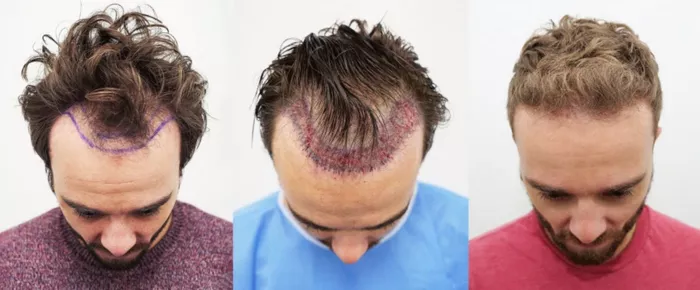Undergoing a hair transplant is a transformative experience, but it comes with certain postoperative precautions. One common concern among individuals with an active lifestyle is when they can safely resume weightlifting after the procedure. In this article, we explore the factors influencing the timeline for returning to weightlifting post-hair transplant and offer guidance for a smooth recovery.
Immediate Postoperative Period
In the immediate aftermath of a hair transplant, it’s crucial to prioritize the healing process. Both Follicular Unit Transplantation (FUT) and Follicular Unit Extraction (FUE) involve some level of tissue disruption, and the body needs time to recover.
1. FUT Considerations: If you’ve undergone an FUT procedure, where a strip of tissue is removed from the donor area, it’s essential to avoid activities that could strain or stretch the sutured area. Weightlifting falls into this category, as the strain on the scalp can compromise the healing process.
2. FUE Considerations: While FUE involves extracting individual follicular units, the donor area still requires time to heal. Vigorous physical activity, including weightlifting, can lead to increased blood flow to the scalp, potentially causing complications during the initial recovery phase.
Understanding the Healing Timeline
The timeline for resuming weightlifting after a hair transplant varies among individuals and depends on how well the body responds to the surgery. However, a general guideline can help manage expectations.
1. First Few Days: Immediately after the procedure, patients should refrain from any strenuous activities, including weightlifting. The focus during this period is on preventing potential complications and allowing the initial healing process to take place.
2. First Two Weeks: During the first two weeks post-transplant, patients are advised to avoid activities that could elevate blood pressure or strain the scalp. This includes bending over, heavy lifting, and any exercises that engage the upper body extensively.
3. Two to Four Weeks: As the initial healing progresses, patients may gradually introduce light activities like walking. However, it’s still recommended to avoid weightlifting and other high-intensity exercises during this period.
Consultation with the Surgeon
One of the most critical aspects of determining when to resume weightlifting is consulting with the surgeon who performed the hair transplant. The surgeon will assess the individual’s healing progress, considering factors such as the type of procedure, overall health, and adherence to postoperative care instructions.
1. Individualized Assessment: Surgeons provide personalized recommendations based on the patient’s specific case. If healing is progressing well and there are no complications, the surgeon may provide the green light to resume certain activities.
2. Open Communication: Patients should maintain open communication with their surgeon, discussing their desire to resume weightlifting and any concerns they may have. The surgeon can offer valuable insights and adjustments to the recovery timeline based on the individual’s progress.
Gradual Resumption of Activities
Resuming weightlifting after a hair transplant is a gradual process that requires patience and attentiveness to one’s body. Rushing back into intense physical activity too soon can lead to complications and compromise the overall success of the procedure.
1. Start Slow: Once the surgeon approves the resumption of physical activities, it’s essential to start slowly. Begin with lower weights and fewer repetitions to gauge how the body responds.
2. Listen to the Body: Paying attention to how the body feels during and after weightlifting sessions is crucial. Any discomfort, pain, or unusual sensations should be reported to the surgeon promptly.
Factors Influencing the Timeline
Several factors can influence how soon an individual can safely resume weightlifting after a hair transplant.
1. Type of Procedure: FUT may require a more extended recovery period compared to FUE due to the nature of the incisions and sutures.
2. Individual Healing: Each person’s body responds differently to surgery. Factors such as overall health, genetics, and lifestyle choices can impact the healing process.
3. Postoperative Care: Adhering to the postoperative care instructions provided by the surgeon is crucial for a smooth recovery. This includes avoiding activities that could strain the scalp and compromise healing.
See Also: [Reveal!] Can You Get a Hair Transplant Without Anyone Knowing
Conclusion
In conclusion, the timeline for resuming weightlifting after a hair transplant is a nuanced process that depends on various factors. While it’s natural to be eager to return to one’s regular fitness routine, prioritizing patience and following the guidance of the surgeon is essential for a successful recovery.
Individuals considering a hair transplant should discuss their lifestyle and fitness goals with their surgeon during the consultation process. This proactive approach allows for a clear understanding of the postoperative expectations and ensures a safe and effective transition back to weightlifting and other physical activities.


